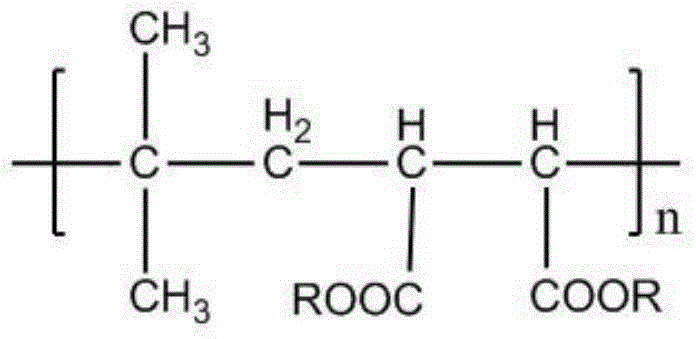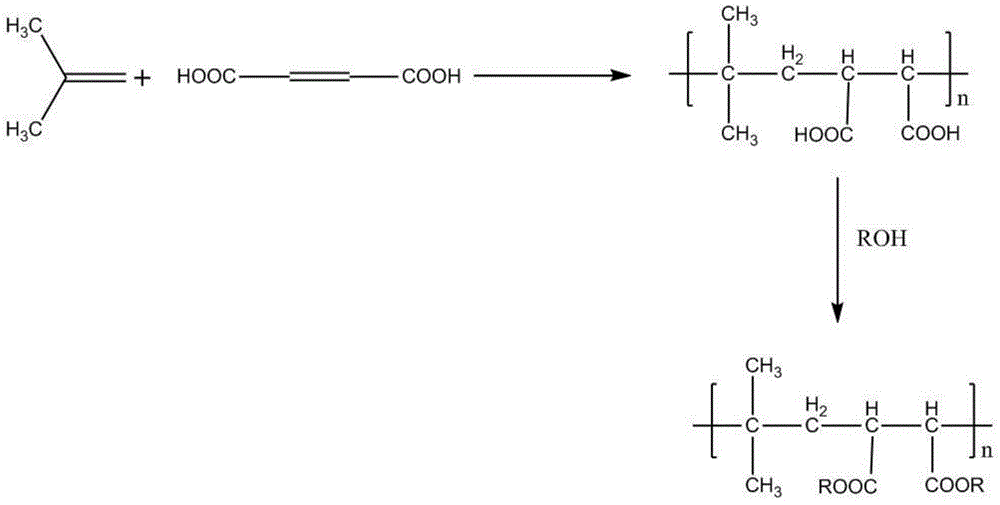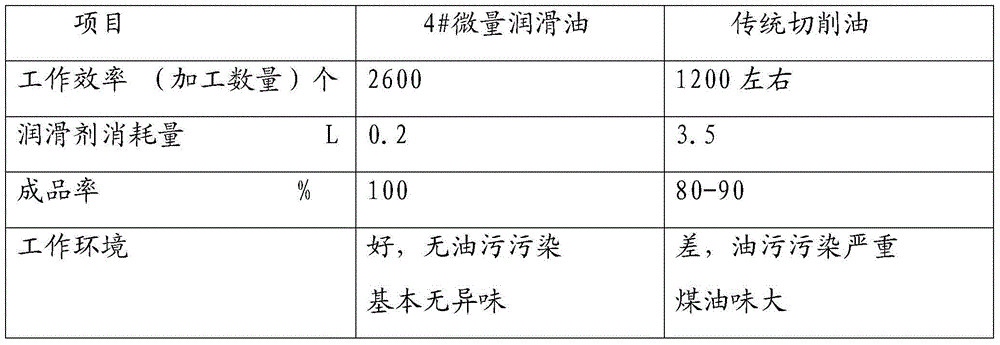Polyisobutene butenedioic acid ester and preparation method thereof as well as minimal quantity lubricating oil prepared from polyisobutene butenedioic acid ester
A technology of polyisobutylene succinate and butylene dioic acid, which is applied in the field of lubrication to achieve the effects of saving cost, low pollution, and saving solvent input
- Summary
- Abstract
- Description
- Claims
- Application Information
AI Technical Summary
Problems solved by technology
Method used
Image
Examples
Embodiment 1
[0046] 1# micro-quantity lubricating oil
[0047] Step 1: Put 148.24kg (2000mol) of isobutanol and 98.06kg (1000mol) of maleic anhydride (butenedioic anhydride) into the polymerization kettle respectively, and stir thoroughly;
[0048] Step 2: Put 0.74kg of initiator dibenzoyl peroxide (BPO) into the polymerization kettle;
[0049] Step 3: Filling with nitrogen to discharge the air in the polymerization kettle;
[0050] Step 4: heat up to 80°C while stirring;
[0051] Step 5: Slowly fill 56.11kg (1000mol) of isobutylene gas into the mixed liquid in the polymerization kettle, and keep stirring at a constant temperature;
[0052] Step 6: Keep stirring at constant temperature for 12 hours after filling the isobutene gas;
[0053] Step 7: Add 6 kg of catalyst cation exchange resin to the polymerization kettle;
[0054] Step 8: heat up to 200°C, fully stir and react for 3 hours;
[0055] Step 9: remove moisture and unreacted isobutanol under reduced pressure;
[0056] Step te...
Embodiment 2
[0067] 2# Minimal quantity lubricating oil
[0068] Step 1: Put 192.71kg (2600mol) of n-butanol and 116.07kg (1000mol) of maleic acid (maleic acid) into the polymerization kettle respectively, and fully stir;
[0069] Step 2: Put 0.62kg of initiator dibenzoyl peroxide (BPO) into the polymerization kettle;
[0070] Step 3: Filling with nitrogen to discharge the air in the polymerization kettle;
[0071] Step 4: heat up to 76°C while stirring;
[0072] Step 5: Slowly fill 56.11kg (1000mol) of isobutylene gas into the mixed liquid in the polymerization kettle, and keep stirring at a constant temperature;
[0073] Step 6: Keep stirring at constant temperature for 10 hours after filling the isobutene gas;
[0074] Step 7: Add 5 kg of catalyst cation exchange resin to the polymerization kettle;
[0075] Step 8: heat up to 185°C, fully stir and react for 3.6 hours;
[0076] Step 9: remove moisture under reduced pressure, unreacted n-butanol;
[0077] Step ten: remove the cation...
Embodiment 3
[0085] 3# micro lubricant
[0086] Step 1: Put 138.21kg (3000mol) of ethanol and 116.07kg (1000mol) of maleic acid into the polymerization kettle respectively, and fully stir;
[0087] Step 2: Put 0.51kg initiator diethylhexyl peroxydicarbonate (EHP) into the polymerization kettle;
[0088] Step 3: Filling with nitrogen to discharge the air in the polymerization kettle;
[0089] Step 4: heat up to 70°C while stirring;
[0090] Step 5: Slowly fill 56.11kg (1000mol) of isobutylene gas into the mixed liquid in the polymerization kettle, and keep stirring at a constant temperature;
[0091] Step 6: Keep stirring at constant temperature for 6 hours after filling the isobutene gas;
[0092] Step 7: Add 3.1 kg of catalyst cation exchange resin to the polymerization kettle;
[0093] Step 8: heat up to 180°C, fully stir and react for 4 hours;
[0094] Step 9: remove moisture and unreacted ethanol under reduced pressure;
[0095] Step ten: remove the cation exchange resin, which i...
PUM
 Login to View More
Login to View More Abstract
Description
Claims
Application Information
 Login to View More
Login to View More - R&D
- Intellectual Property
- Life Sciences
- Materials
- Tech Scout
- Unparalleled Data Quality
- Higher Quality Content
- 60% Fewer Hallucinations
Browse by: Latest US Patents, China's latest patents, Technical Efficacy Thesaurus, Application Domain, Technology Topic, Popular Technical Reports.
© 2025 PatSnap. All rights reserved.Legal|Privacy policy|Modern Slavery Act Transparency Statement|Sitemap|About US| Contact US: help@patsnap.com



